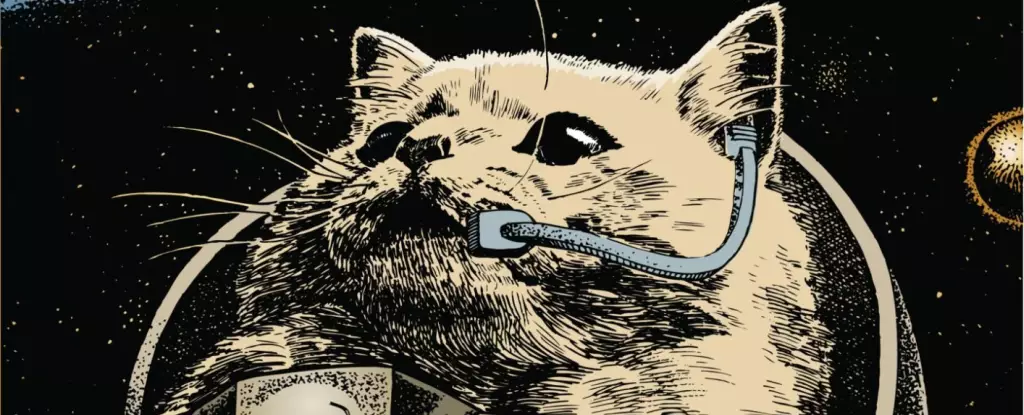The domestic cat, an unassuming creature that many of us encounter daily, possesses an almost magical ability to maneuver through space with grace and precision. Particularly captivating is their innate skill of landing effortlessly on their feet after a fall, a phenomenon so remarkable it has inspired scientific inquiry and fascination throughout the years. This article delves into the mechanics behind this ability, the scientific investigations it has prompted, and what these findings mean in a broader context.
At first glance, one might overlook the complex anatomy that enables cats to execute their famed acrobatics. Unlike many other animals, cats have flexible spines and a unique skeletal structure that grants them the ability to twist and turn mid-air. This flexibility, combined with an extraordinary sense of balance, allows them to orient their bodies after a fall—a skill often referred to as the “righting reflex.”
This adaptability serves crucial evolutionary functions. In the wild, cats often find themselves perched in precarious positions or climbing high branches in search of prey. The ability to land safely enhances their survival chances, further cementing their status as efficient hunters. Observing a cat in free fall is a lesson in fluidity; their bodies seem to morph through various stances, always aiming for that perfect landing.
The curiosity surrounding this acrobatic dexterity led scientists to scrutinize the mechanics behind a cat’s remarkable ability to right itself. In the late 19th century, pioneering research techniques such as chronophotography were employed to capture and dissect the intricate movements of cats in various falling scenarios. Étienne-Jules Marey’s work marked a significant turn in understanding motion dynamics, bringing forth a plethora of insights into how cats navigate tumbling through the air.
Fast-forward to the mid-20th century, the United States Air Force decided to delve deeper into this natural phenomenon by leveraging parabolic flight experiments. The objective was straightforward yet profound: how would a cat’s innate sense of position and balance fare in an environment devoid of the usual gravitational cues? With the ingenious setup of specially designed aircraft, researchers aimed to simulate a state of weightlessness, hoping to examine how cats would adapt their falling techniques under these unusual conditions.
The experiments began aboard a Convair C-131 Samaritan, aptly dubbed the “vomit comet” due to the disorienting experience it provided to its passengers. Researchers released cats into this chaotic environment to document their responses. Initial observations revealed a stark contrast to their typical graceful falls: the cats displayed signs of confusion, grasping for familiar sensations of orientation that simply did not exist.
Despite these challenges, the feline subjects demonstrated a remarkable instinct to twist their bodies in an attempt to regain their bearings. While their reflexes were muted under the simulated weightlessness, the video evidence underscored an undeniable tenacity; they still relied on natural instinct, evoking fascination in the observant scientists.
Intriguingly, the outcomes of these feline studies extended far beyond the world of pets. Insights gleaned from understanding a cat’s tumbling prowess contributed to further research on human equilibrium in freefall scenarios. Pioneers in the study, such as Siegfried Gerathewohl and Herbert Stallings, brought valuable knowledge to NASA, exploring how humans might better adapt to conditions in outer space.
Moreover, these experiments led to techniques that astronauts currently use to reposition themselves in microgravity. By mimicking the cat’s instinctual responses, astronauts improve their maneuverability onboard spacecraft, an adaptation vital for safety and efficiency during missions.
Through the lens of scientific inquiry and experimentation, the seemingly ordinary act of falling has revealed the extraordinary capabilities of cats. Their ability to right themselves while plummeting showcases not just a physical adaptability, but also a broader lesson about intuition and survival in the animal kingdom. As we continue to unlock the mysteries of nature, we find that even the simplest phenomena—like a cat’s tumble—can lead to profound discoveries that resonate beyond the boundaries of our terrestrial existence. In this interwoven narrative of curiosity, courage, and adaptability, the humble cat stands as a symbol of nature’s incredible design—a creature that reminds us of the beauty and complexity inherent in life itself.


Leave a Reply